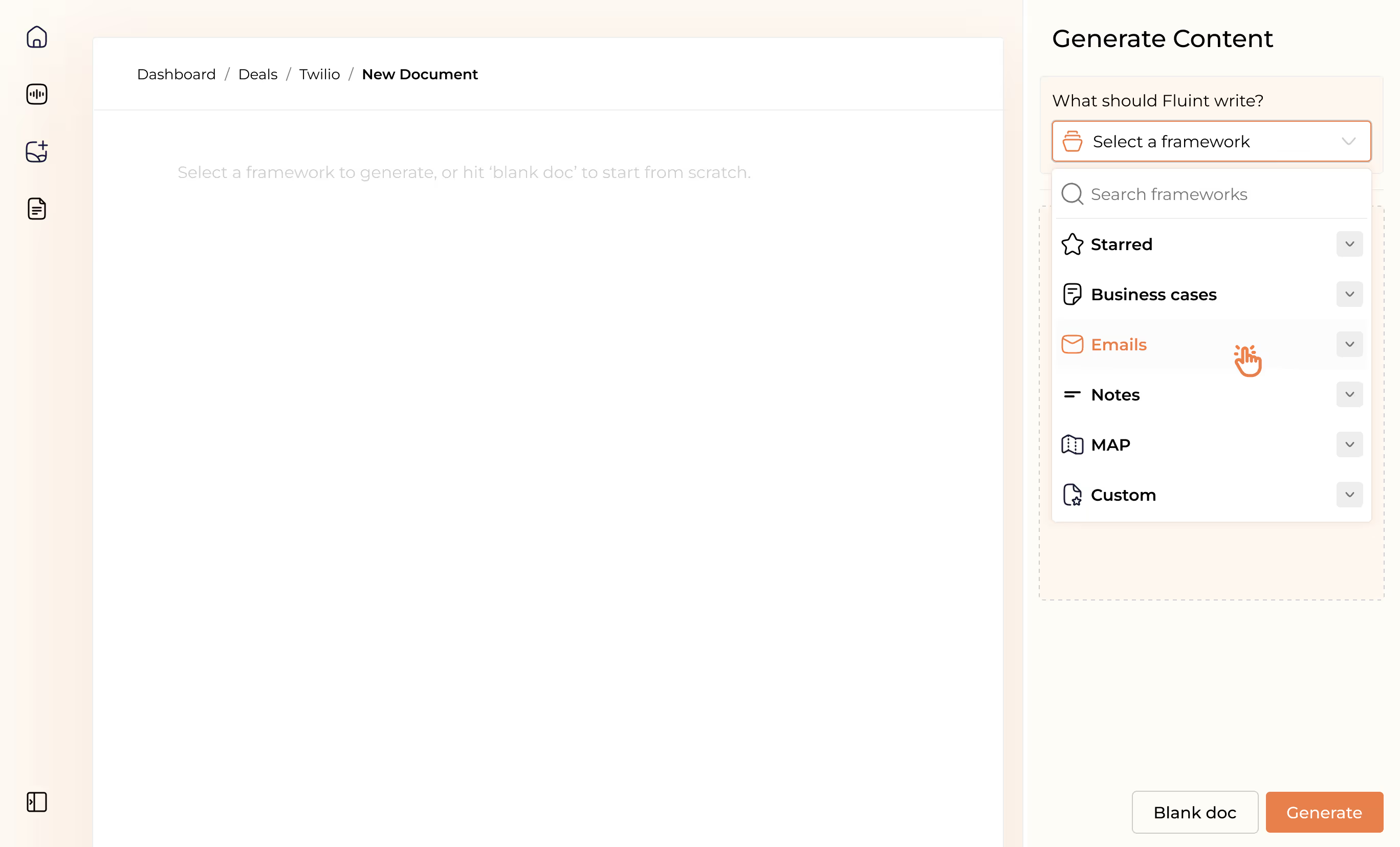Selling in Soundbites: How to Sell More By Saying Less


Reps who can communicate more while saying less, win.
So I want to introduce you to the idea of “selling in soundbites.”
Shrinking your entire sales cycle into 1 page. Then 1 paragraph. Then, 1 sentence.
But not just any sentence. The right sentence.
1 Sentence, 3 Years
Let me give you an example:
Our express lane in the race to become the nextgen’s go-to.
That sentence generated one of our biggest deals — a 3-year contract.
And it probably means nothing to you.
But to the CMO of a major credit card? It said everything she needed to hear:
- Races have a ticking clock. Acting now is important.
- “Nextgen” was an internal phrase. Referring to a changing customer base.
- Context to those changes: 52% of the Fortune 500’s from the year 2000 don’t exist anymore. They used to be their biggest customers. On top of those customers folding, a competitive company was quickly signing emerging tech companies as their customers. (Stealing the "next generation" of customers.)
- Races have winners and losers. Would it be them? The “express lane” (our offering) was the way to win. Fast.
Keep all of this in mind for a second. Here’s how I think about the qualities of good soundbites:
Quality Soundbites = Sticky + Shareable + Simple
Let’s break that down.
1/ Create Sticky Sentences
You know what doesn’t stick? Long decks and demos.
We don’t remember them. But we do remember short sentences.
Specifically, sentences that fit with the stories we’re already telling:
“The fate of a memory is mostly determined by how much it means to us… We don’t try to remember physics equations for the sake of it, but rather because in our personal narrative, we are someone who knows a lot about physics.” (Source)
That’s why this soundbite about the “nextgen” stuck. CMO’s see themselves as legacy builders.
They create enduring brands. They’re not people who fade into irrelevance.
2/ Create Shareable Sentences
Repetition is persuasive. So you need buying teams to share your message over, and over.
Especially when you’re not in the room.
Here’s an example from Matthew Rogers, a Fluint user who texted last week:
“The guy I talked to on Friday had never spoken to me, but he recited, almost verbatim, the 1-page business case I drafted months ago.”
That is HUGE. And it means:
- His message was sticky. Months later, people remembered.
- It was shared so wide, it spread to contacts he’d never met.
So, how do you make your message shareable? Focus on:
- Clarity: Cut the jargon and product speak.
- Ownership: Co-create it with your champions.
- Priorities: Link to an internal project with mindshare.
You’ll know you've done it when people you never met can recite your message.
So when people I hadn’t met before called us the “express lane,” I knew we were in a good spot.
3/ Create Simple Sentences
Simplicity is complexity resolved, not ignored. (Constantin Brancusi)
So simple sentences aren’t "dumbed down." But they are easy to understand.
And the easiest ideas to understand fit alongside our existing “mental models.”
Venkatesh Rao explains why this matters in his book, Tempo:
Mental models exhibit momentum like physical objects. Just as physical objects have mass and velocity, our mental models gather meaning and coherence over time, making them hard to change suddenly. This explains why deeply held beliefs or organizational cultures resist rapid change. Their mental momentum must be overcome.
He goes on to say later:
Narrative rationality is the ability to think, make decisions, and act in ways that make sense with respect to the most compelling and elegant story that you can improvise…
This is particularly relevant for enterprise sellers.
When people face a complex problem, they rely on narratives.
Which is fundamentally different from “calculative rationality.”
- Calculative rationality = cold logic, running the numbers.
- Narrative rationality = relying on “mental models” built on stories and analogies.
So how do you tap into “narrative rationality?”
You create what Rao calls a “cheap trick.” A short story, in the form of an analogy.
Analogies create leverage. A few words can carry the weight of a whole deck.
“Express lane” was my analogy in this case. It fit the feeling they were in a race. (It also highlighted our value: curated intro’s vs. just a database like Crunchbase.)
Plus, it tapped into one more idea from Rao’s research on narratives: Every narrative has a “tempo.”
It’s very hard to set or change tempo. So “Tempo Matching” is key when crafting soundbites:
- If an executive is under pressure to cut costs, focus on fast, upfront savings. Don’t talk about “total cost of ownership” or long-term ROI.
- "Express lane" matched the CMO’s race tempo. (And it was a play on their name.)
- Compare that to a deal I’m working on now:
The CEO's goal is to “protect" cash and “preserve" revenue. So my champion and I are framed Fluint around securing renewals. Preserving what’s theirs vs. accelerating growth.
From 1 Sentence, to 1 Word
Think you could beat out every competitor with just one word?
Here's a fascinating case study, showing it can be done.
It's from the architect behind the Sydney Opera House, Jørn Utzon.
He sold his design to the planning committee using just four letters: "Sail."
If you’ve seen a picture of the Opera House, it’s iconic. It sits right on the water and is most often photographed with boats sailing by.
So once the committee saw the design and had the word “sail” in their minds, Utzon was in a league of his own—even though, technically speaking, nobody knew how to actually build it.

Now, It's Your Turn
Here’s the related exercise, to help compress your message into a soundbite:
1/ Start by writing out a concise recommendation:
< Buying team > should < take this recommended action > by < timing >. This will result in < an exec-level outcome >, while avoiding < cost of the status quo > created by < problem statement >.
2/ Compress that headline into a sentence:
Unlock < desired outcome > and avoid < cost of the problem >.
3/ Now, if you're up for it, compress that sentence into a single word.
And here’s the thing — your word has to be different for each account. Jørn Utzon couldn’t re-use “Sail” for any other project. That's why it worked so well.
Extra Reading
As you think about the narrative you’re creating, and your analogy for it, check out:
FAQ's on:
Why stop now?
You’re on a roll. Keep reading related write-up’s:
Draft with one click, go from DIY, to done-with-you AI
Get an executive-ready business case in seconds, built with your buyer's words and our AI.

Meet the sellers simplifying complex deals
Loved by top performers from 500+ companies with over $250M in closed-won revenue, across 19,900 deals managed with Fluint

Now getting more call transcripts into the tool so I can do more of that 1-click goodness.



The buying team literally skipped entire steps in the decision process after seeing our champion lay out the value for them.


Which is what Fluint lets me do: enable my champions, by making it easy for them to sell what matters to them and impacts their role.








